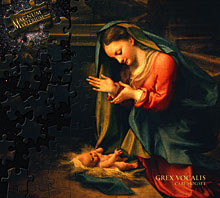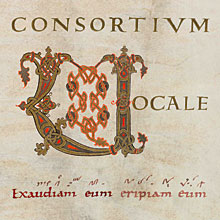| Columns Retired Columns & Blogs |
The Fifth Element #51 Page 2
The first CD I put on was Attention Screen's Live at Merkin Hall (CD, Stereophile STPH018-2). There was quite a contrast to the aggressive sound of the GINI LS3/5as: the Frieds were quite smooth—a bit too smooth for my taste—but at least the hand claps at the end of "Mansour's Gift" sounded sincere rather than hollow, I then put on Anthony Newman and the Graham Ashton Ensemble's Music for Organ, Brass and Timpani (SACD/CD, Sonoma SAC 001), which sounded a bit veiled, and with the tail of the hall acoustic cut off a bit prematurely.
Footnote 2: After writing this column, and at the risk of opening up another can of worms—and I sure don't want to do that—I swapped the Fried Compact 7s left to right and turned them upside down so that the tweeters were above the woofers. The result was pretty much a one-to-one tradeoff. The treble was now more prominent, but less well integrated with the midrange. If I had to live with these speakers forever, I'd probably want stands taller than 28", and I'd experiment more extensively with associated equipment and speaker cables.
I then put on a new discovery, the John Coltrane Quartet's Ballads, from 1962 (CD, Impulse! GRD 156). If Coltrane's reputation as an "angry tenor" blowing out "sheets of sound" has kept you away, this gentle, quiet collection might rope you in. The other players are McCoy Tyner on piano, Elvin Jones on drums, and Jimmy Garrison on bass (except for Reggie Workman on "It's Easy to Remember"). The original sessions, produced by Bob Thiele, were recorded by Rudy van Gelder at his studio in New Jersey. The only thing not to be entranced by is the 32-minute running time. But this recording is not to be missed.
Coltrane's Ballads was more the Fried's cup of tea, but by this time I was thinking that the sound was entirely too tailored and polite, so I sent the Carat I57 back to the on-deck circle and started over again from the beginning with the Arcam Solo Mini. More about which later, but my preliminary impression is that while the Solo Mini's sound has a strong family resemblance to that of the full-sized Arcam Solo Music, I prefer the Mini by a nose, at least within its power limitations. Its sound is just slightly more tactile. The only practical thing so far that is less than ducky is that the Mini's speaker terminals are quite small, and don't accept spade lugs.
Ah, much better! The percussion on Live at Merkin Hall was finally showing a bit of sparkle. On the first few tracks of Test CD 2, the Fried now sounded at least in the ballpark of respectable and recommendable speakers. The electric bass had both snap and sustain, and RL's speaking voice was natural, with only the touch of sibilance that I think is on the recording. Even better, the differences between the in- and out-of-phase speaking voices and bass tracks were close to the greatest I have ever heard—always a promise of good things to come.
The only thing that raised an eyebrow during my preliminary listening was that the character of the pink noise on track 15 of Test CD 2 changed dramatically when, after standing at the listening position, I sat down. (However, the higher- and lower-frequency components of the pink noise no longer seemed to be coming from different sources.) A quick listen to the Tallis Scholars' new recording of Allegri's Miserere (CD, Gimell CDGIM 041) produced the same effect: heard from standing up, the timbres were veiled, the soundstage radically foreshortened; when I sat down, all clicked into focus and sounded very nice indeed. I could get halfway excited about this. I next put on Jackson Browne's Late for the Sky (CD, Elektra) and found myself singing harmony on "Fountain of Sorrow"—always a good sign. The cymbal on Jim Hall's Concierto was now in its proper perspective.
I then used, as a torture test, organist James Busby's performance of Herbert Howells' Master Tallis's Testament, from Pipes Rhode Island (CD, Riago 101), in which a 32Hz pedal tone is backed up by a 16Hz suboctave pipe. Nice, as far as it went, which was somewhat short of doing full justice to that 32Hz low C. I ended with cuts from Anna Netrebko and Danielle de Niese. Again, nice, but not as transparent and extended as I have ever heard.
I think that there are more refined and extended tweeters out there—at a price—and Fried must agree with me: their more expensive models have different tweeters. I also think that the Compact 7's woofer is too large to do complete justice to the midrange. However, what your incremental dollars buy you over the three-way, $1090/pair Renaissance Audio MLP-403.5 that I wrote about in August 2008 is not only better industrial design and fit'n'finish, but a more coherent sound. And while the Renaissance's bigger woofer might give you more bass extension, the Compact 7's bass is faster and punchier.
Fried's Compact 7 is handsome and well made. Furthermore, when the right crossover is properly connected to the woofer and the tweeter, it has a very respectable sound that I can get enthusiastic about, though by no means insanely enthusiastic.
The obvious comparison is with Harbeth's HL-3PES-2, which costs only $55 more per pair. It's a straightforward tradeoff of sonic quality for sonic quantity: The Harbeth nails the midrange and treble in a way the Fried does not, but the Fried produces a bigger sound, and does dynamics and bass better (footnote 2).
If you were to splash out on an Arcam Solo Mini, the Fried Compact 7s, some speaker cables, and some tallish stands, then, for an outlay of about $3500, you'd have an attractive system that should give lots of pleasure with minimal fuss. By "attractive," I mean a decisive step up in sound quality from a den/library/dorm room-type "second" system. But the search will continue.
That Time of Year
Which is my favorite of Shakespeare's sonnets, by the way.
Here are some gift suggestions. I've run out of space, so these assessments are brief, but every disc is a total knockout. Highest recommendations, all.
 Morten Lauridsen's evergreen O Magnum Mysterium appears on two discs that are new to me. On Mysterium (CD, Sigillum LVCD 1), the Finnish group Lumen Valo takes a brave plunge, using only eight singers. It is a sublime performance and a magnificent recording. This small group's otherworldly virtuosity brings unprecedented transparency to Lauridsen's neo-Renaissance writing. Time stands still. Heartbreakingly beautiful. Just buy it: www.lumenvalo.fi. Grex Vocalis' Renessanse for Kor (CD, Kiku FXCD 39) has been a desert-island disc of mine for at least 20 years, so you can imagine how jazzed I was to discover that Norway's hyper-tweaky (I mean that in a good way) label 2L had recorded the group singing O Magnum Mysterium (2L26SACD). Painfully beautiful. Again, just buy it: www.2L.no.
Morten Lauridsen's evergreen O Magnum Mysterium appears on two discs that are new to me. On Mysterium (CD, Sigillum LVCD 1), the Finnish group Lumen Valo takes a brave plunge, using only eight singers. It is a sublime performance and a magnificent recording. This small group's otherworldly virtuosity brings unprecedented transparency to Lauridsen's neo-Renaissance writing. Time stands still. Heartbreakingly beautiful. Just buy it: www.lumenvalo.fi. Grex Vocalis' Renessanse for Kor (CD, Kiku FXCD 39) has been a desert-island disc of mine for at least 20 years, so you can imagine how jazzed I was to discover that Norway's hyper-tweaky (I mean that in a good way) label 2L had recorded the group singing O Magnum Mysterium (2L26SACD). Painfully beautiful. Again, just buy it: www.2L.no.
 2L has released another stellar SACD/CD of vocal music, but from the opposite pole of the liturgical year: Lent and Holy Week. Consortium Vocale Oslo's Exaudium Eum (2L43SACD) may or may not be the best job of singing I have ever heard in a program of monophonic chant (though at the moment I can't think of a better one), but it is, beyond doubt, the best recording job. You can almost smell the incense. If you don't have it already, Gregorian Chant is a taste worth acquiring—or at least worth visiting, when the recording is this good. Gorgeous booklet and world-class liner notes. Miss it at your peril.
2L has released another stellar SACD/CD of vocal music, but from the opposite pole of the liturgical year: Lent and Holy Week. Consortium Vocale Oslo's Exaudium Eum (2L43SACD) may or may not be the best job of singing I have ever heard in a program of monophonic chant (though at the moment I can't think of a better one), but it is, beyond doubt, the best recording job. You can almost smell the incense. If you don't have it already, Gregorian Chant is a taste worth acquiring—or at least worth visiting, when the recording is this good. Gorgeous booklet and world-class liner notes. Miss it at your peril.
To send lawyers, guns, and/or money.
Footnote 2: After writing this column, and at the risk of opening up another can of worms—and I sure don't want to do that—I swapped the Fried Compact 7s left to right and turned them upside down so that the tweeters were above the woofers. The result was pretty much a one-to-one tradeoff. The treble was now more prominent, but less well integrated with the midrange. If I had to live with these speakers forever, I'd probably want stands taller than 28", and I'd experiment more extensively with associated equipment and speaker cables.
- Log in or register to post comments




































